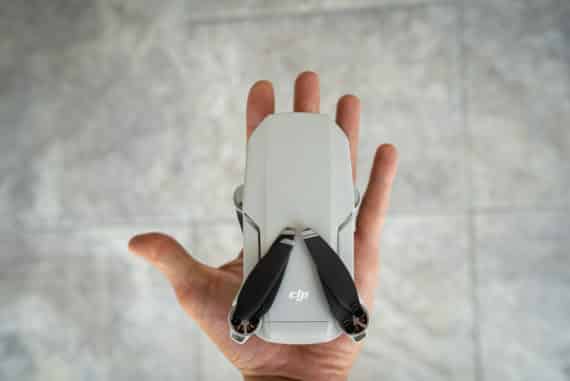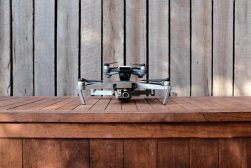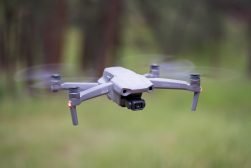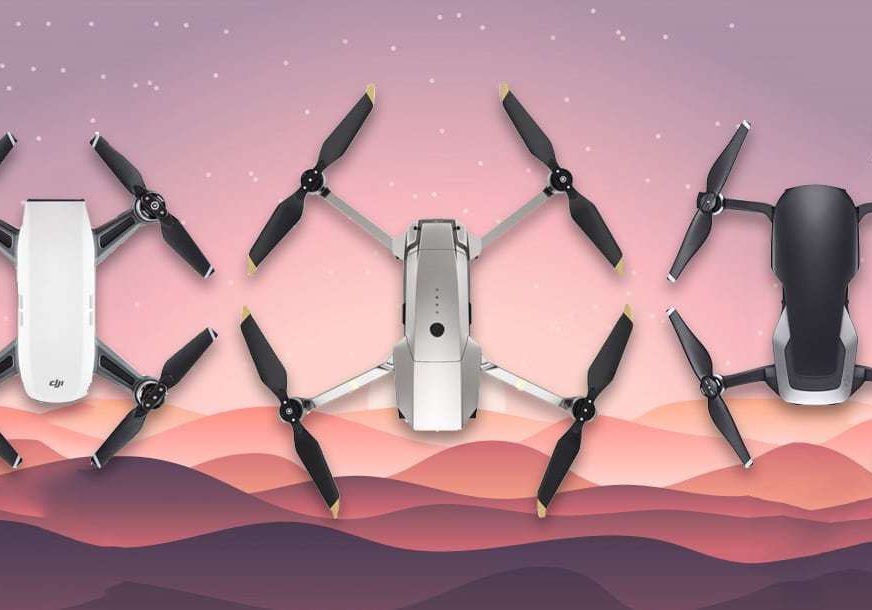
DJI Spark vs Mavic Pro vs Mavic Air
An honest review of the DJI Spark vs Mavic Pro vs DJI Mavic Air drones for photographers. Is the extra cost of the Mavic Pro Platinum justifiable?
I’ve put together this short post comparing the DJI Spark vs the Mavic Pro for photographers like me who are interested in taking aerial photos.
I’m a wedding photographer, not an aerial photographer, but I love the idea of offering a new perspective to my photography for my clients.
It’s getting harder and harder to differentiate our work as photographers. Having the ability to take photos from the sky can allow you to open a new door to creativity whether professionally or just for fun.
I also have to admit that my reason for buying both the DJI Spark and the DJI Mavic Pro Platinum was more to be used as a toy than anything else! Yes, I’m almost 40 years old, but flying a drone is just so much fun!
Shooting aerial photos for my clients was just an excuse I made to myself (and my wife!) to justify the cost, but I soon found that I could offer the odd aerial photo to clients too, as a little bonus surprise in their regular wedding photography package.
(Update: I also now own the DJI Mavic Mini – review and the Mavic Air 2 – review.)
DJI Spark vs Mavic Pro for Photographers
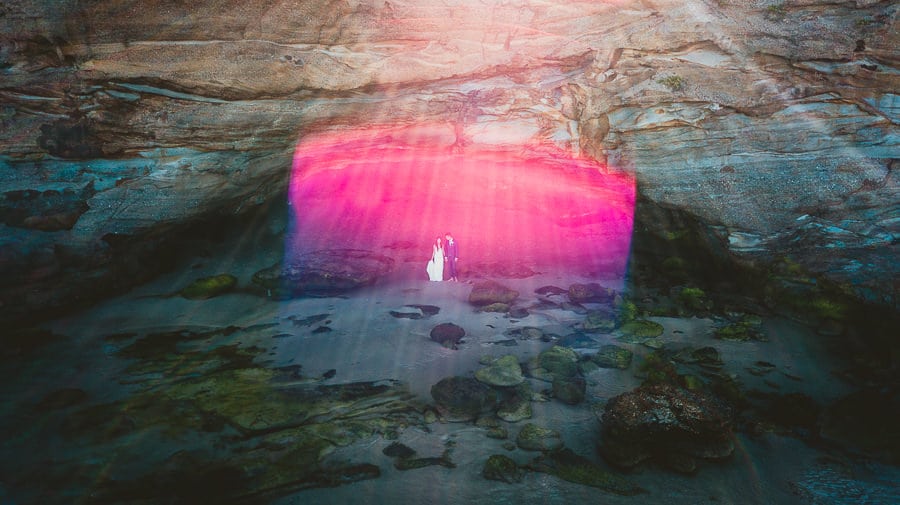
Crazy lens flare from the DJI Mavic Pro | 1/320 f/2.6 ISO 100
There are plenty of in depth reviews on the Internet already which compare the DJI Spark to the DJI Mavic Pro. The majority of these compare the two drones from the perspective of a videographer, or at least someone who wants to use the drones to capture motion footage.
If you’re like me and just want a drone to be able to take the odd photo from above, be it for your clients or just for fun, this is the review for you.
I’ll be comparing the DJI Spark with Fly More Combo (which includes most importantly a remote control) with the DJI Mavic Pro Platinum, both of which I currently own.
I only have space in my camera bag for one drone, so read on to find out which one made the cut!
#1 | DJI Spark vs Mavic Pro | Cost

DJI Spark | 1/320 f/2.6 ISO 100 | JPEG image edited in Lightroom
Let’s get this out of the way first since buying a drone as a hobbyist aerial photographer is probably going to be slightly hard to justify!
The DJI Spark is the cheapest drone in the DJI lineup. If you want the Spark on its own without the remote control, you can pick it up for less than $400, making it also suitable for kids.
However, I highly recommend you invest in the Spark + Fly More Combo, so you also get the remote control, spare battery and some other less essential knick-knacks. In my opinion, the Spark isn’t worth considering without the remote control, since the flight distance is severely limited.
Being able to pick up a drone of this quality for around $600 blows my mind. We take for granted the sheer technology that goes into a consumer good that can fly up to 500m up in the sky or 1.2 miles (2km) away, all the time allowing you to take photos and videos, broadcasting in real time back to your mobile device. It’s absolutely incredible that this is possible.
The Mavic Pro can be bought for around $900, but I highly recommend you invest in the Mavic Pro Platinum for about $300 more. The DJI Mavic Pro Platinum + Fly More Combo is slightly more expensive still, but I don’t think it’s necessary.
I bought the DJI Spark Fly More Combo initially based solely on the price. I knew that realistically, I wasn’t going to be earning money using a drone as a photographer, so it was really just a big boy’s toy for me! I’m sure many other Spark owners will be in the same boat.
In this respect, the DJI Spark wins this round since it’s cheaper than the Mavic Pro. However, next we need to see whether the higher price of the Mavic Pro is justifiable.
Cost | Winner | DJI Spark
#2 | DJI Spark vs Mavic Pro | Size
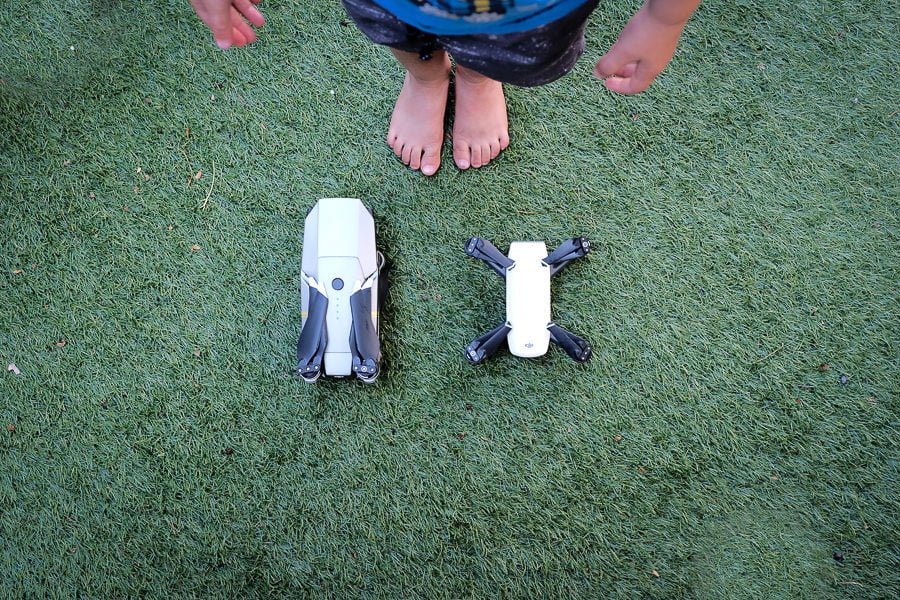
DJI Mavic Pro Platinum vs DJI Spark | My 3 year old son Harry has small feet, for size comparison!
Another big factor for me investing in the DJI Spark initially was the reduced size and weight of the drone. At only 8.2 x 3 x 9.8 inches, it looks and feels like a child’s toy. It also attracts much less attention when airborne than any of DJI’s other drones.
The DJI Mavic Pro on the other hand measures 9.5 x 9.5 x 10.5 inches (20.8 x 20.8 x 26.6 cm) when folded – no Goliath by any means, but bigger than the DJI Spark. It weighs 1.62 pounds (744 grams) compared to the Spark’s 0.66 pounds (300 grams).
Although having a smaller, lighter drone in my camera bag was always the goal, since purchasing both the DJI Spark and the DJI Mavic Pro Platinum and comparing them side by side, I found that there was more to just the size/weight on paper of the two drones.
Yes, the DJI Spark is undoubtedly much lighter than the Mavic Pro and this is a great thing. It’s also smaller. However, and this is a big one in my opinion, the shape of the DJI Spark actually makes it more inconvenient to transport.
Since the propeller arms of the Spark can’t be retracted tidily like the Mavic Pro, it’s actually rather awkward to pack in a bag. You have to account for the entire outer perimeter of the Spark, since its too hard to pack other items in the spaces between each arm.
I much prefer how the Mavic Pro can be transported much like a small brick, in a more regular shape that can be easily slotted into a compartment in a rolling camera bag, or one of these camera backpacks.
Although I do miss the lighter weight of the Spark vs the Mavic Pro, after owning both drones, I much prefer removing and stowing the Mavic Pro in my camera bag.
Size | Winner | TIE
#3 | DJI Spark vs Mavic Pro | Build
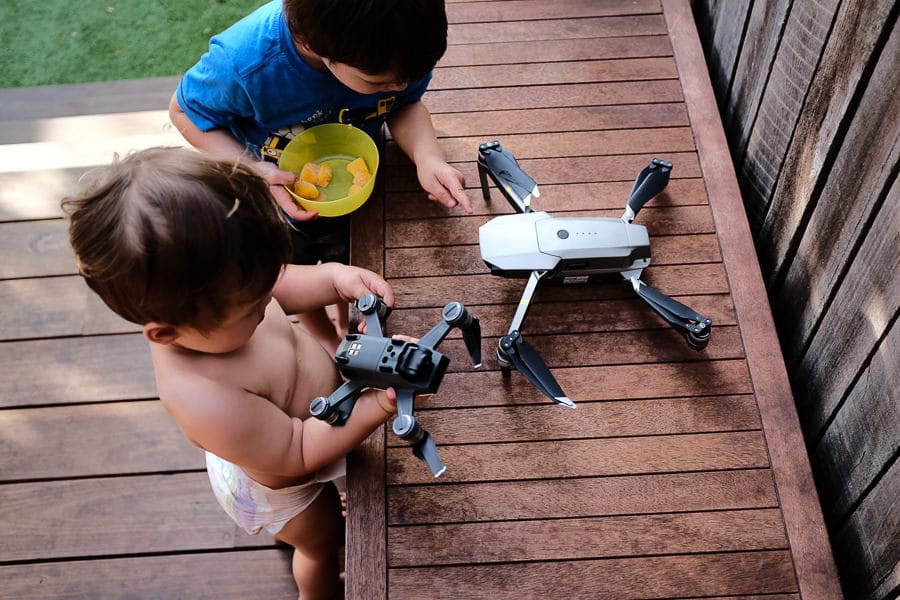
Harry and Leo putting the drones through the ultimate breakage test…!
Due to the capabilities of the DJI Spark compared to the Mavic Pro, the build of the Spark is much more basic in two most notable areas.
First, the gimble on the Spark is 2-axis, compared to the Mavic Pro’s 3-axis movement. This is largely irrelevant for photographers taking still shots, but it means that the gimble on the Mavic Pro is more fiddly and fragile than that of the Spark.
When stowing the Mavic Pro, you’re advised to use the attached gimble brace and gimble cover, both of which are rather fiddly. The Spark on the other hand requires no such protection, making it quicker to transport.
Secondly, since the Mavic Pro is faster and more agile in the air than the Spark, so its propellers are longer, and there’s more advanced hardware inside the unit.
Holding both drones, the Spark feels like one piece of solid plastic that can be thrown around a bit, but the Mavic Pro feels more fragile – I wouldn’t want to drop it, whereas the Spark can take a bit more abuse.
How relevant this is to you is questionable, and you’ll have to read on to decide whether the other advantages of the Mavic Pro make it the drone for you.
Build | Winner | DJI Spark
#4 | DJI Spark vs Mavic Pro | Range
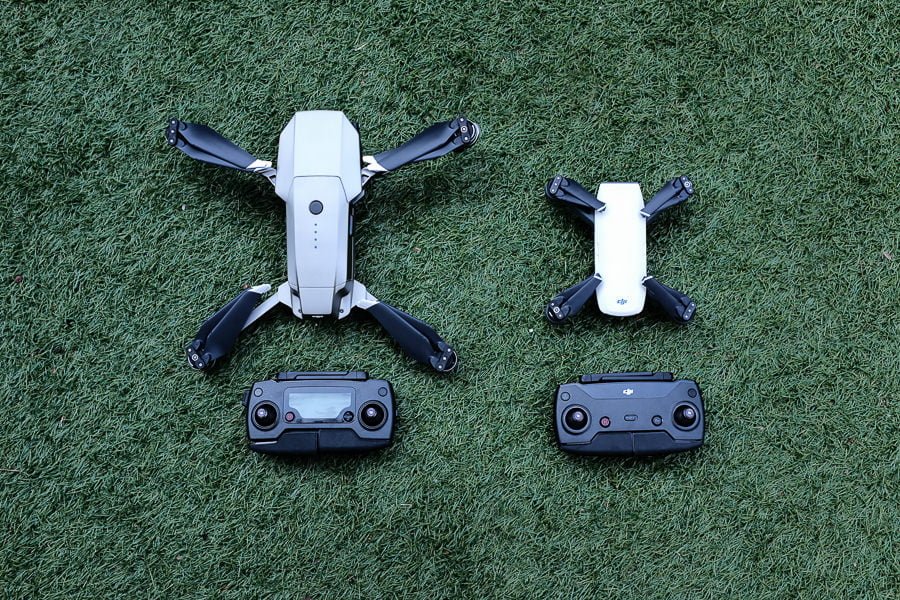
By range in this instance, I’m referring to the distance the remote controller can transmit to the drone, as well as the drone’s battery power.
Initially when buying the DJI Spark, I thought range and battery life wouldn’t be much of an issue. To justify its use professionally, all I wanted a drone for was to take a bird’s eye view of a wedding couple, perhaps laying down somewhere interesting.
For this reason, the 16 minutes of advertised battery life of the DJI Spark, and 1.2 mile (2 km) range sounded more than adequate.
Even though you may expect to only fly the drone within close range, when you own one, it’s very tempting to start pushing the boundaries.
Being able to fly a drone much further than the eye can see, although ill-advised, is an amazing thing!
I soon discovered that: a) the battery life was more like 12 minutes with moderate flying; and b) you had to account for variables such as head winds on your return flight ‘back to home’.
When flying the DJI Spark, I found the experience extremely stressful due to the lack of sufficient battery life.
I found myself rushing the composition of my photos, and not truly enjoying the experience of actually flying the drone, since I’d be too worried about the battery suddenly dieing.
Can you imagine this feeling when the drone’s above water, on a windy day, like the shot below?!
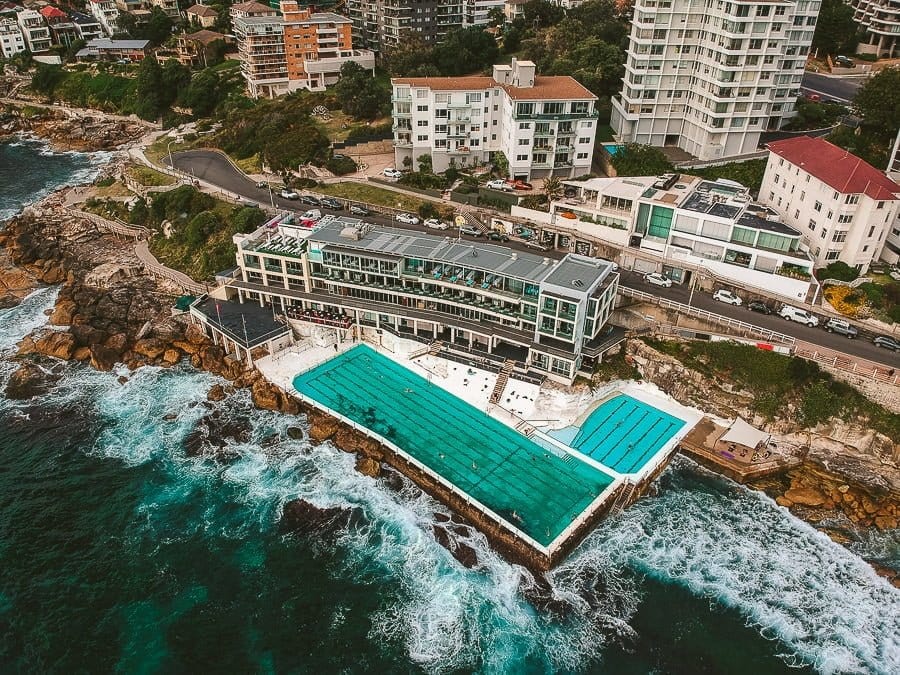
DJI Spark | 1/320 f/2.6 ISO 100 | JPEG image edited in Lightroom
Even with the automatic return-to-home feature when battery life ran low, there was still the danger of a head-wind preventing the lightweight, under-powered Spark from getting back safely.
If you follow me on Facebook you’d have seen some rather embarrassing footage of me crash landing the Spark whilst in Spain earlier this year – this costly mistake was because I’d miscalculated the amount of battery life left in the drone, and was hurriedly trying to manually land it.
The poor battery life of the DJI Spark ended up being the biggest catalyst in my switching to the DJI Mavic Pro Platinum in the end.
With up to 30 minutes of flight time (not to mention a frankly ridiculous 4.3 miles (7 km) range!!), I find myself bringing it back home with well over 10% remaining battery life with every flight. The regular Mavic Pro has a battery life of 27 minutes.
Even if you can only see yourself needing to take a simple bird’s eye view photo within close range with your drone, I highly recommend spending a little more and getting the Mavic Pro Platinum over the Spark.
It’ll mean you have more time to look for photo opportunities whilst in the sky, and properly compose the photos rather than just rushing to make it back home safely.
Range | Winner | DJI Mavic Pro
#5 | DJI Spark vs Mavic Pro | Image Quality

DJI Spark | 1/320 f/2.6 ISO 100 | JPEG image edited in Lightroom
Since I’m comparing the Spark to the Mavic Pro for photographers, I won’t talk much about video quality. All you need to know if you want a drone for video is that the Spark offers 1080p footage and the Mavic Pro offers 4k, so it’s a win for the Mavic.
As for stills quality, the Spark offers JPEG only whilst the Mavic Pro offers RAW + JPEG. Most professional photographers will definitely want RAW support for the additional latitude RAW files offer when post processing.
However, I should mention that the JPEG image quality straight out of the DJI Spark is excellent, and actually much better than the DJI Phantom 4 (which I reviewed here).
The colours look great, and the image is sharp and vibrant. Even though it’s a JPEG, you can still comfortably apply your presets to the images in post and have them look good. (All the images in this review have been post processed in Lightroom.)
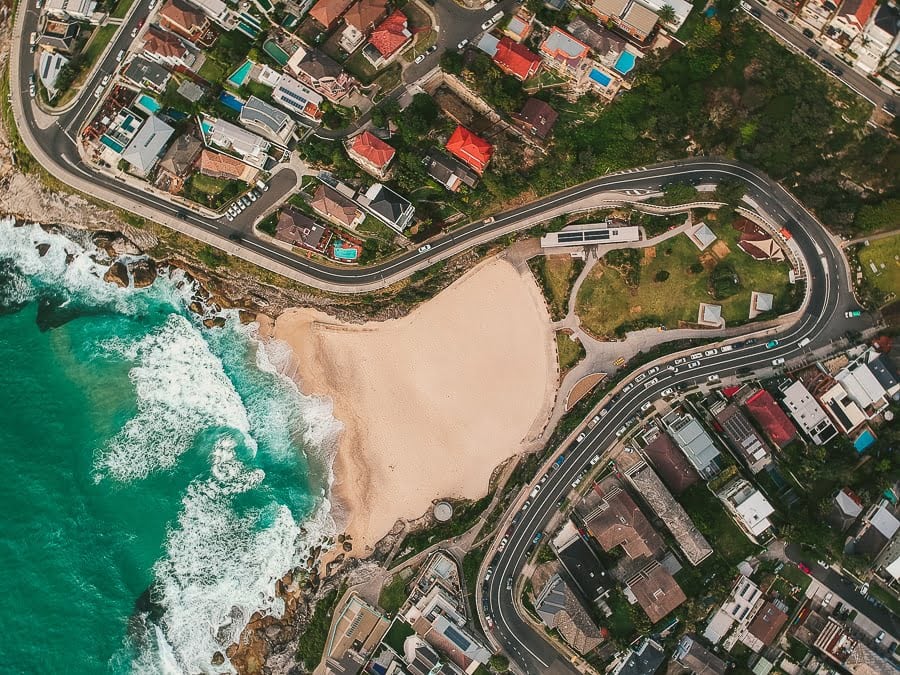
DJI Spark | 1/320 f/2.6 ISO 100 | JPEG image edited in Lightroom
With the RAW files of the DJI Mavic Pro, yes, there is more leeway to experiment with white balance or shadow/highlight recovery, but don’t expect much from the small 1/2.3″ sensor.
If you blow your highlights or crush your shadows, wave good bye to that detail forever :-(
Also, anything above base-level ISO quickly introduces noise, so don’t expect any low-light photography with these drones (it’s also ill-advised to fly after sunset anyway).
The image below was shot at ISO 800 during the reception of a Sri Lankan destination wedding I shot recently. It’s an acceptable image, but you’ll notice I had to shoot at 1/100 to try and balance an as-low-as-possible ISO with an exposure that wasn’t too dark – in higher winds, this may not have been possible.
I didn’t brighten the exposure of the photo in post so you can get an idea of the actual ambient light when I took it.

DJI Spark | 1/100 f/2.6 ISO 800 | JPEG image edited in Lightroom
It’s hard to say whether there’s any notable visual difference between a JPEG file from the Spark vs a RAW that’s been edited into a JPEG from the Mavic Pro, but I just prefer having the option of the RAW from the Mavic Pro.
I’m sure many other pro photographers will be the same.
The DJI Mavic Pro also offers a 16:9 ratio for stills, which I find much more appealing than the 4:3 offered by the Spark. 16:9 gives a much more cinematic feel to the drone photo, as shown in the image below taken at the entrance to a cave.
I usually shoot drones on an auto-exposure setting so I don’t have to worry about any additional variables while I’m trying to concentrate on flying. However, in the photo below I wanted to under-expose the ambient since the couple was being lit adequately by a ray of sunlight, so I shot in manual.
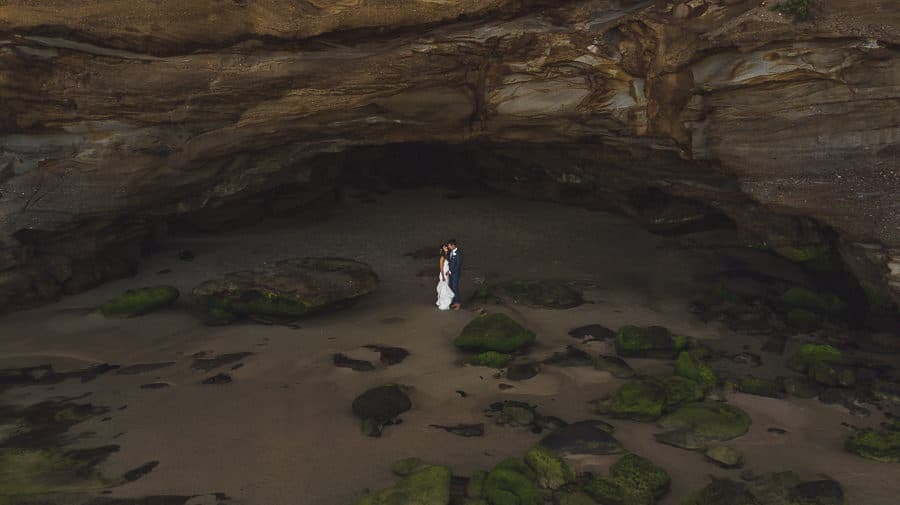
DJI Mavic Pro Platinum | 1/320 f/2.6 ISO 100 | RAW image edited in Lightroom
Whilst the photo above looks pretty good to me, if you want amazing image quality out of a drone, you’ll have to stump up the big dollars.
Something like the Phantom 4 Pro features a 1″ sensor for much better stills photography performance.
At the end of the day, both images from the DJI Spark and the DJI Mavic Pro can be comfortably used professionally, despite only one drone offering RAW support.
Your client will be so impressed at their aerial photo, that marginal differences in image quality won’t matter at all.
Image Quality | Winner | Mavic Pro
#7 |DJI Spark vs Mavic Pro | Noise
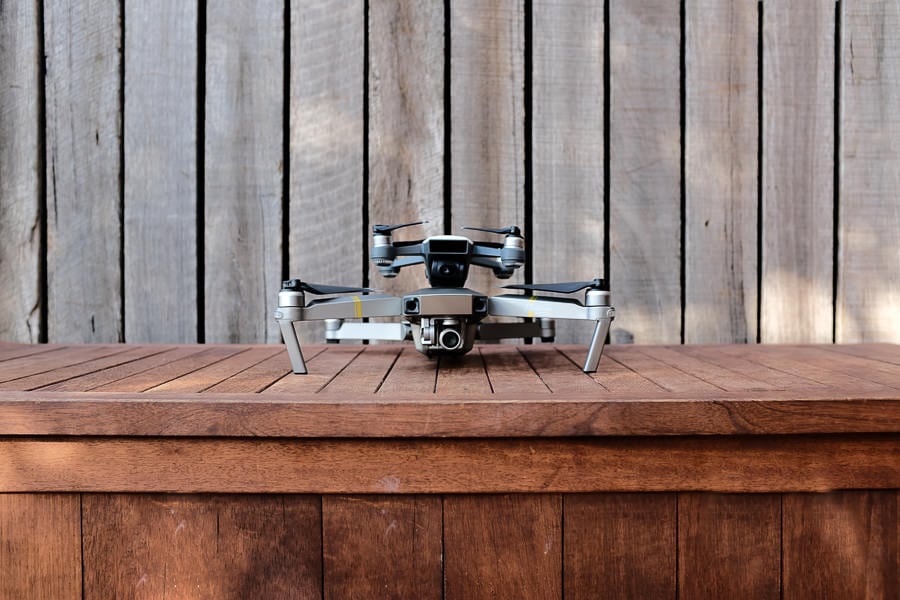
DJI Spark on top of a DJI Mavic Pro Platinum with its propeller arms extended.
The sound produced by a drone is a very important consideration in my opinion. Funnily enough, this was the single most important factor in me finally upgrading from the DJI Spark to the Mavic Pro Platinum.
Flying a drone usually attracts a crowd, mostly due to the noise that it creates during take off and landing. For the bigger drones, even when airborne they can still attract attention due to their noise.
Most photographers will want to fly their drones as inconspicuously as possible, both to preserve the candid nature of their photo (especially if it includes members of the public), and also to save their own anxiety – I become very nervous when flying a drone with a large audience watching, and am sure you’d feel the same too!
Since the DJI Spark is the smallest, lightest drone in the DJI line-up, it’s natural that it’s the quietest too. I’d heard a regular Mavic Pro in flight before, and knew that is was a noisier beast, and much more likely to attract attention.

DJI Mavic Pro Platinum | 1/6400 f/2.2 ISO 100 | RAW image edited in Lightroom
Then I discovered the DJI Mavic Pro Platinum and all that changed. For an extra 300-or-so dollars, the Platinum offers greatly reduced noise levels.
More importantly, the ‘pitch’ or tone of the noise produced by the DJI Mavic Pro Platinum makes it even less noticeable than the Spark! (Check out this video if you want to hear what a Spark sounds like.)
If you can imagine the original Mavic Pro sounding like a swarm of angry bees, the DJI Mavic Pro Platinum is more like a large desk fan on a low setting – a low, deep sound that’s not unlike a noise you would normally hear in everyday life.
As I mentioned before, this was a huge consideration for me, and I’m so glad I’ve found a drone that won’t disturb members of the public (especially at a wedding), whilst still allowing me to get a great aerial photo.
Noise | Winner | Mavic Pro PLATINUM (N.B. not the regular Mavic Pro)
#8 |DJI Spark vs Mavic Pro | Agility
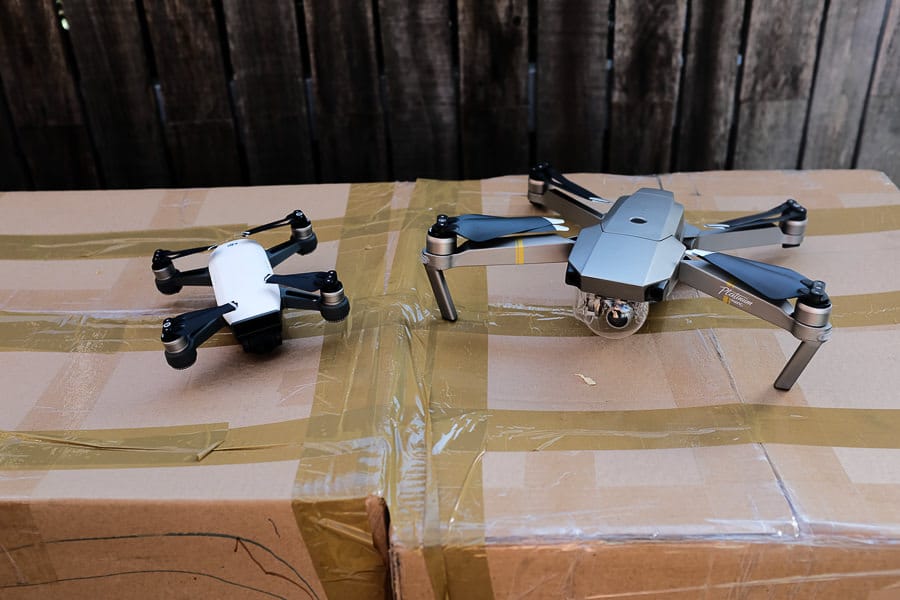
The DJI Spark next to the DJI Mavic Pro Platinum with arms extended and gimble cover attached.
The speed and agility of a drone to be used for stills photography should be largely irrelevant, right? That’s what I thought anyway…
The DJI Spark is small and nimble, and can be flown indoors or through tight spaces far easier than the Mavic Pro. However, it’s also rather under-powered.
As you grow more confident with your drone, you’ll want to fly it further and further away to either get the shot you want, or merely to explore.
If I’m completely honest with myself, I bought a drone as a toy to explore an area from above far away from where I’m standing. I absolutely love this ability, and it blows my mind that it’s available to consumers at this price.
Whilst the Spark handles itself ok in regular conditions, as soon as the wind picks up, it gets thrown around a lot, and I found myself fighting to achieve my photo composition much more than with the much stronger Mavic Pro.
With its more powerful motor and wider propeller-span, the Mavic Pro handles much better than the Spark, and the additional speed means that you can get to where you need much faster and easier too.
Agility | Winner | Mavic Pro
DJI Spark vs Mavic Pro | Conclusion
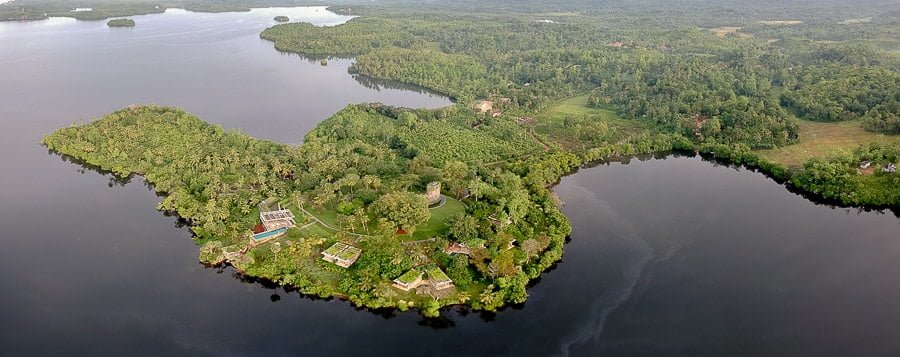
DJI Spark | Panorama Mode | 1/160 f/2.6 ISO 100
I didn’t mention any of the video features of the DJI Spark or the DJI Mavic Pro since this was a comparison of these drones for photographers. I wanted to highlight only those factors that were important to me when considering which drone to keep.
For me, having a drone that can stay in the air for up to 30 minutes, not attract too much attention when flown, and can pack away neatly, made my final decision very easy.
I highly recommend the Mavic Pro Platinum for photographers, or for anyone who wants to take advantage of a drone.
The DJI Spark is an incredible product, and I look forward to the next iteration which I hope will bring foldable arms and longer battery life. Until that day comes, I consider the Spark to be more of a toy to be used in very short range (despite its capabilities on paper).
We’ll need to wait a little longer for a truly palm-sized drone that can be comfortably used professionally, but in the meantime, I’m so happy with my purchase of the DJI Mavic Pro Platinum and intend to use it during client work as much as possible.
Whilst I’m not charging any extra for aerial photography, it’s great to be able to surprise my clients with ‘something extra’, and for me, the DJI Mavic Pro Platinum is the perfect tool to do so.
UPDATE 2018: DJI Mavic Air vs DJI Mavic Pro Platinum
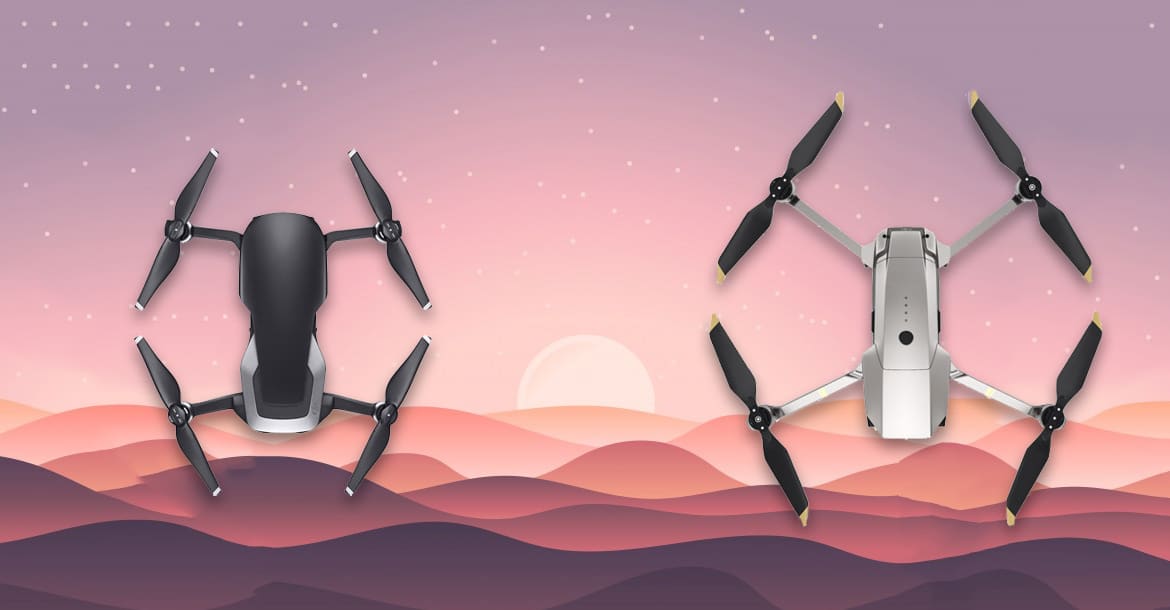
Following the release of the palm sized DJI Mavic Air in 2017, I thought it would be best to update this post to include a comparison with the DJI Mavic Pro Platinum.
I won’t bother comparing the DJI Spark with the DJI Mavic Air, I consider the latter to be a replacement for the former, and superior in many ways.
Wedding photographers in particular who want to offer something different to their clients without breaking the bank (and without overloading their already bulging camera bags!) have flocked to the DJI Mavic Air… but have they made the right decision? Well, yes and no.
I love the form factor of the DJI Mavic Air. The foldable design makes the drone as tall and wide as a smartphone, barely bigger than its supplementary controller.
As a side note, I strongly recommend that you buy the controller – the Wifi implementation that allows you to fly the Mavic Air with your smart phone is a gimmick, and I wouldn’t trust the limited range, especially not for pro use. Your best bet is to invest in a Fly More Combo such as this one.
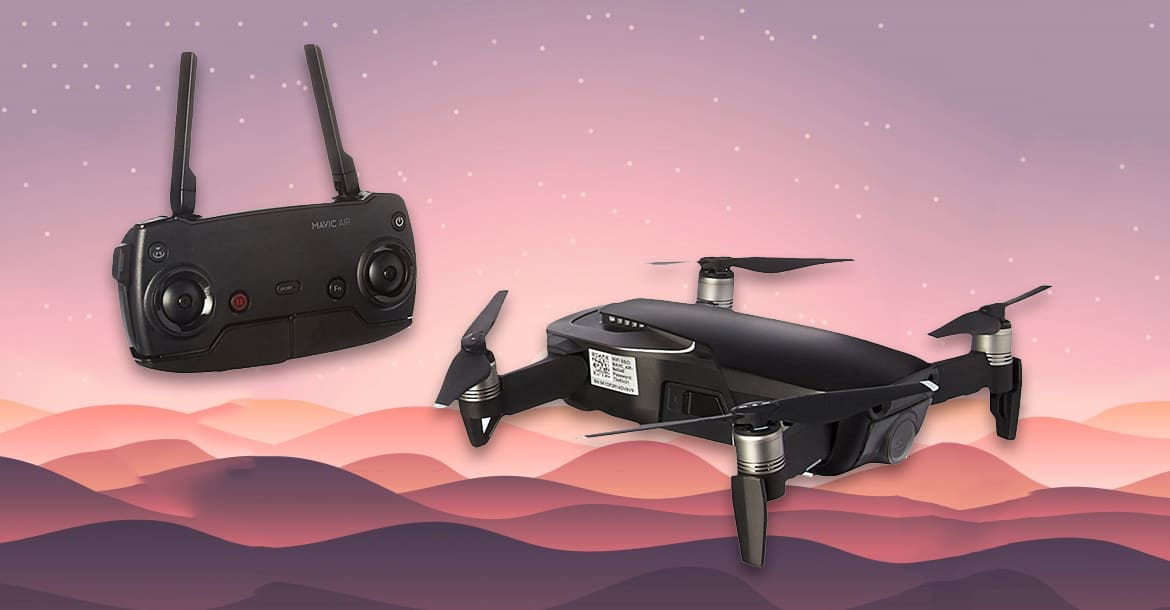
If you’re investing in the DJI Mavic Air, I recommend you buy the ‘Fly More Combo’ which includes a controller.
I borrowed as DJI Mavic Air for a few weeks to test against my DJI Mavic Pro Platinum, and whilst I loved the ability to carry it in my coat pocket, this is where my love for this revolutionary drone ended.
The Mavic Air still sounds like a swarm of angry bees, even louder than both the Spark and the Mavic Pro, and much louder than my Mavic Pro Platinum, which is by far the quietest of the lot.
The volume of the drone should matter to you, even if you think it’s insignificant now. Having a quieter drone is invaluable in most public usage situations, especially at weddings.
As for flight time, the Mavic Air capped out at about 18 minutes, vs 25 minutes on the Mavic Pro Platinum. As I mentioned before, the extra minutes in the air are crucial for both finding the right composition, and battling any head winds that seemingly appear from nowhere.
Obviously, as the Mavic Pro is bigger than the Air with a wider propeller to propeller diameter, it’s much more agile and stable in flight. This is most noticeable in stronger winders, where the Air gets blown around much easier.
As for the image quality, both drones faired the same, with RAW files being editable up to an acceptable standard. I didn’t bother testing video since I’m not interested in it, but by all accounts, the quality is very similar on both devices.
As for the controllers, the Mavic Pro controller is better in several ways. There’s no screen on the Mavic Air’s controller to show real-time flight info, no exposure dial on the back of the controller, less rubber and metal and no 5 axis joystick (the thing for controlling DJI Goggles and assigning custom functions).
Then there’s the actual video transmission sync – something called Ocusync on the Mavic Pro ensures a consistently clear video feed at 1080p with no latency, and the signal is reliable.
With the Mavic Air on the other hand, I noticed that transmission was similar to the Spark, with 720p feed and a signal that would frequently stutter and freeze, particularly when the drone was flown far away. In short, I didn’t feel confident flying it further than direct line of sight.
In summary, I think the DJI Mavic Air is a great drone, and a lot of fun to fly. However, I do consider it more of a toy, or at best, a drone to be used for short range, short duration flights in low winds. If this is all you need it for, then go ahead, but be sure to get this Fly More Combo and practice a lot before using it in any situation which involves other people!
If you plan to use it professionally, I’d strongly recommend paying a little bit more for the Mavic Pro Platinum, or any of the larger drones in the DJI series.





